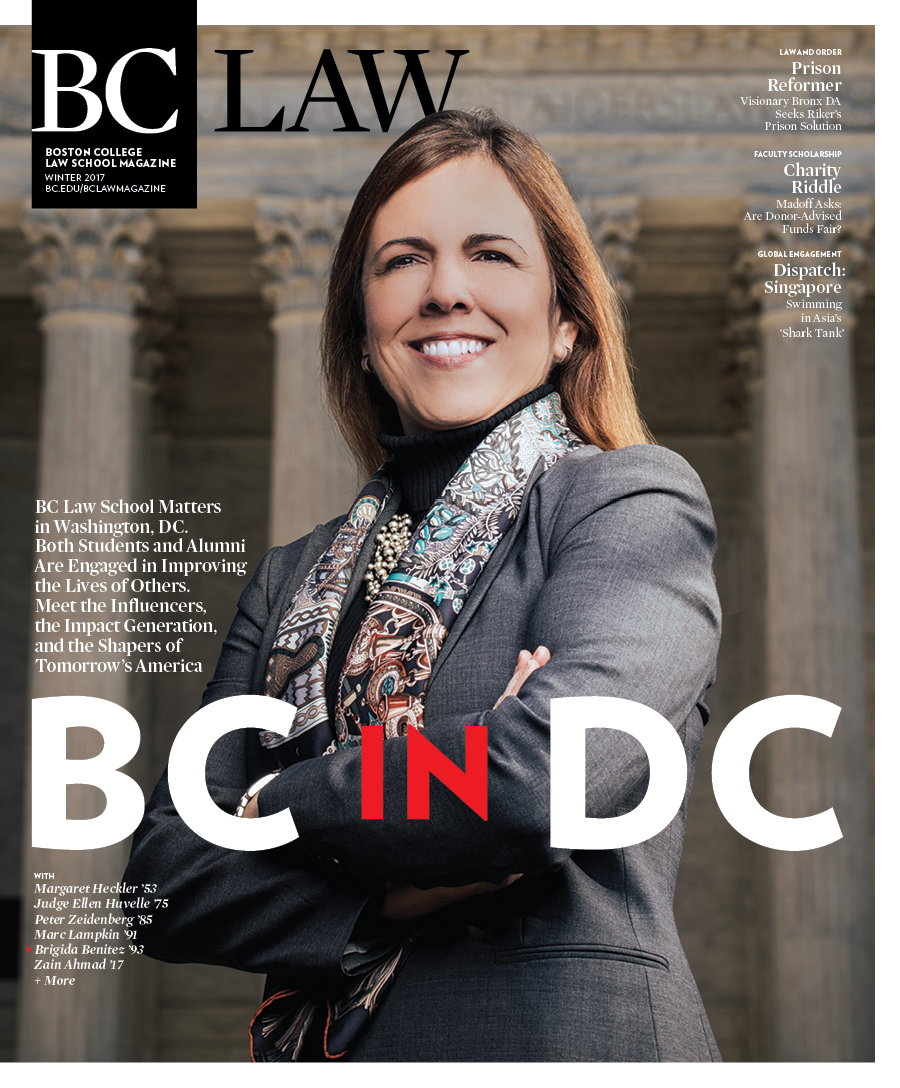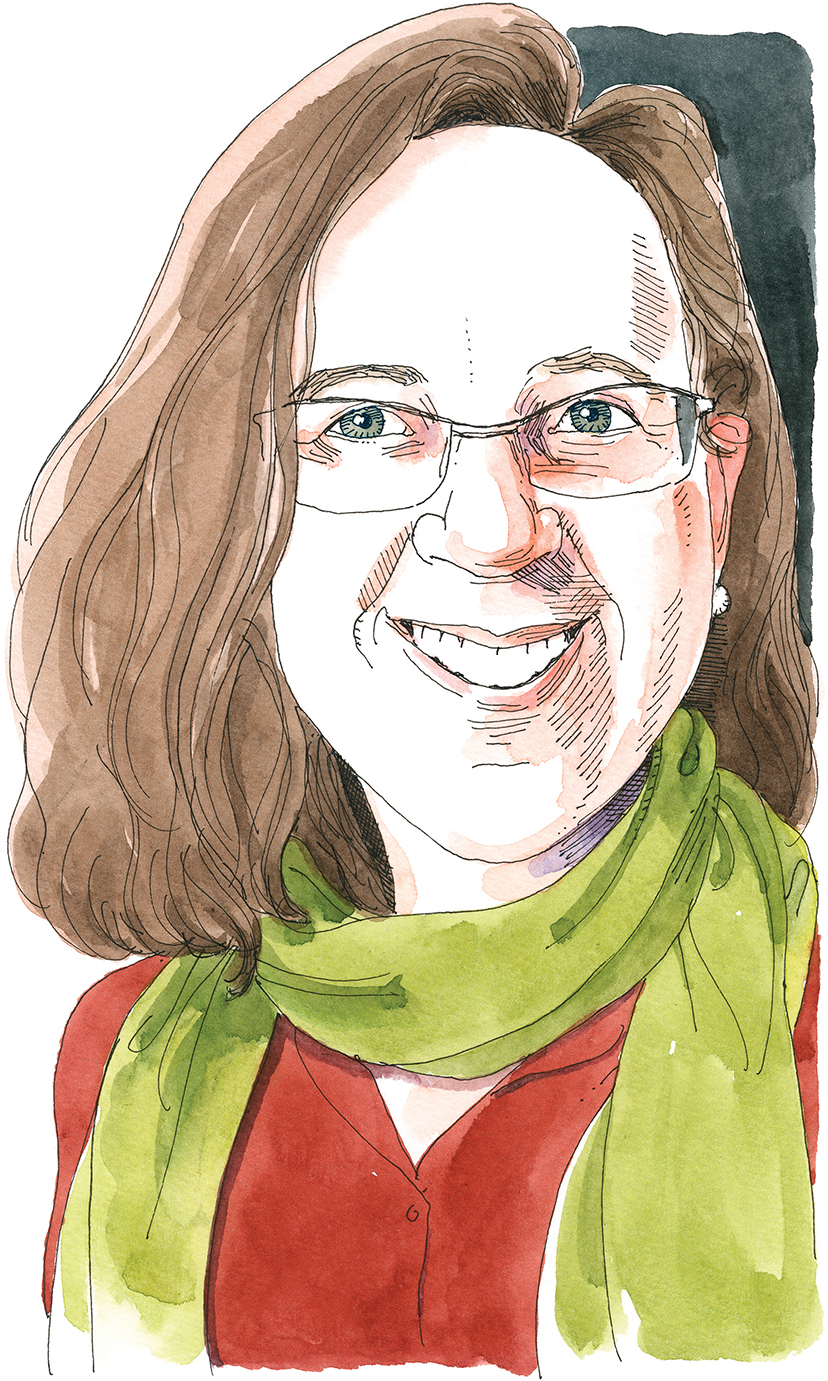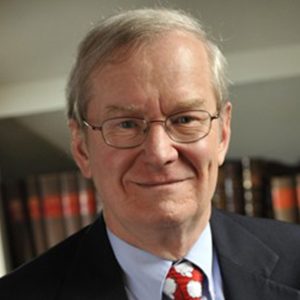PocketRésumé
Credentials AB with honors, Brown; JD, LLM in taxation, NYU. Practice Private tax law practice 1984–1993, with firms including Hill & Barlow and Foley, Hoag & Eliot. Teaching BC Law faculty since 1993. Writings Author of Immortality and the Law (Yale, 2010), plus numerous articles and book chapters; lead author of Practical Guide to Estate Planning (CCH, annual editions 2001–2016).
The Idea: The tax rules on charitable contributions should be redrawn; the current rules, notably those for donor-advised funds (DAFs), confer huge benefits on the wealthy and the financial industry while depriving charities and government of sorely needed cash. Since 2011, Professor Ray Madoff has been spotlighting the problem through articles on DAFs in publications ranging from Tax Notes to the New York Times and the New York Review of Books. She’s also been convening experts from academia, government, and philanthropies to discuss how the tax code treats charitable giving at events held by the Forum on Philanthropy and the Public Good, which she directs and which she cofounded in 2014 with Professor William Bagley.
The Impact: One day last October, the philanthropic world awoke to learn that United Way, long the country’s biggest charity, had been nudged out of first place by another entity, which booked $4.6 billion in donations in fiscal 2015. Was it the Red Cross? The American Heart Association? No, the new philanthropic behemoth was Fidelity Charitable, a nonprofit DAF sponsor run by Fidelity Investments.
According to Madoff, commercial DAF sponsors like Fidelity Charitable and funds sponsored by financial giants Schwab and Vanguard use the model of community foundations, including the Boston Foundation, that raise money and distribute it to local charities. It was Fidelity that paved the way when, in 1991, it sought and received an IRS ruling that, as Madoff puts it, an investment firm “could create a community foundation for all the world.” Donors to Fidelity Charitable get an immediate tax deduction, but they can distribute their donation to an actual working charity—the Salvation Army, the local food pantry—in a year, a decade, or never. While private foundations must distribute at least 5 percent of assets to working charities each year, DAFs face no such requirement. Thus, Madoff argues, DAFs pervert the purpose of the charitable deduction: to get money to a place where it can serve the public good.
“Donor-advised funds pervert the purpose of the charitable deduction: to get money to a place where it can serve the public good.”
Meanwhile, DAF sponsors charge donors an annual maintenance fee—Fidelity donors pay $500 or .6 percent of assets, whichever is greater. Sponsors also profit when DAF assets are invested in proprietary mutual funds. In short, the sponsors benefit when large sums sit for years in DAF accounts. Some sponsors discourage asset distribution by charging higher fees to donors who empty their accounts too fast, and marketing materials from many sponsors encourage donors, ironically, to hold onto money in their account by way of building “a legacy of giving.”
Inertia, indecision, the desire for control, and the wish to be courted by potential beneficiaries also discourage the distribution of assets. In her articles, Madoff calls for a new rule requiring full distribution over a reasonable period. As she says, “We have certain human tendencies, including tendencies to hoard capital, and we want rules that discourage tendencies that work against the public interest.”
Another major problem with DAFs involves the tax treatment of complex, or illiquid, assets like real estate, collectibles, or hedge fund positions. As Madoff and her coauthor, the noted philanthropist Lewis Cullman, write in a blistering piece in the New York Review of Books, “Congress specifically prohibited donations of complex assets to private foundations from being deducted at their market value because it was concerned about problems of valuation”—in other words, unrealistically high appraisals, which the IRS may lack the resources to challenge. By contrast, complex assets donated to a DAF can be deducted at market value—a bonanza to many wealthy donors. Even if the assets ultimately sell for less than the appraisal, the donor keeps the full deduction. Write Madoff and Cullman: “The donor is happy; the DAF sponsor is neutral; the party that has been harmed is the taxpaying public”—because of the loss to the public coffers.
Madoff and Bagley founded the Forum on Philanthropy and the Public Good because “nobody was speaking for the interest of charities and the public” when it comes to the charitable deduction, she says. “There was a lot of lobbying by interest groups but not a lot of good, broad-based discussion that considers the interests of the public as well.” The forum has sponsored, among other events, a conference at Stanford University on the timing of distributions, which drew foundation heads from Silicon Valley and other locations; and one on DAFs in Washington, DC, with speakers from Fidelity and the IRS, and staffers from Capitol Hill in attendance.
At the Washington event, Madoff says, the Hill staffers “told me there’s a real need for nonpartisan information on tax policy, and that’s what we’re starting to provide.” Several pages in Giving USA, a philanthropy industry annual, “arose from” the Washington conference, she adds, “so I think we are having an impact already.”




